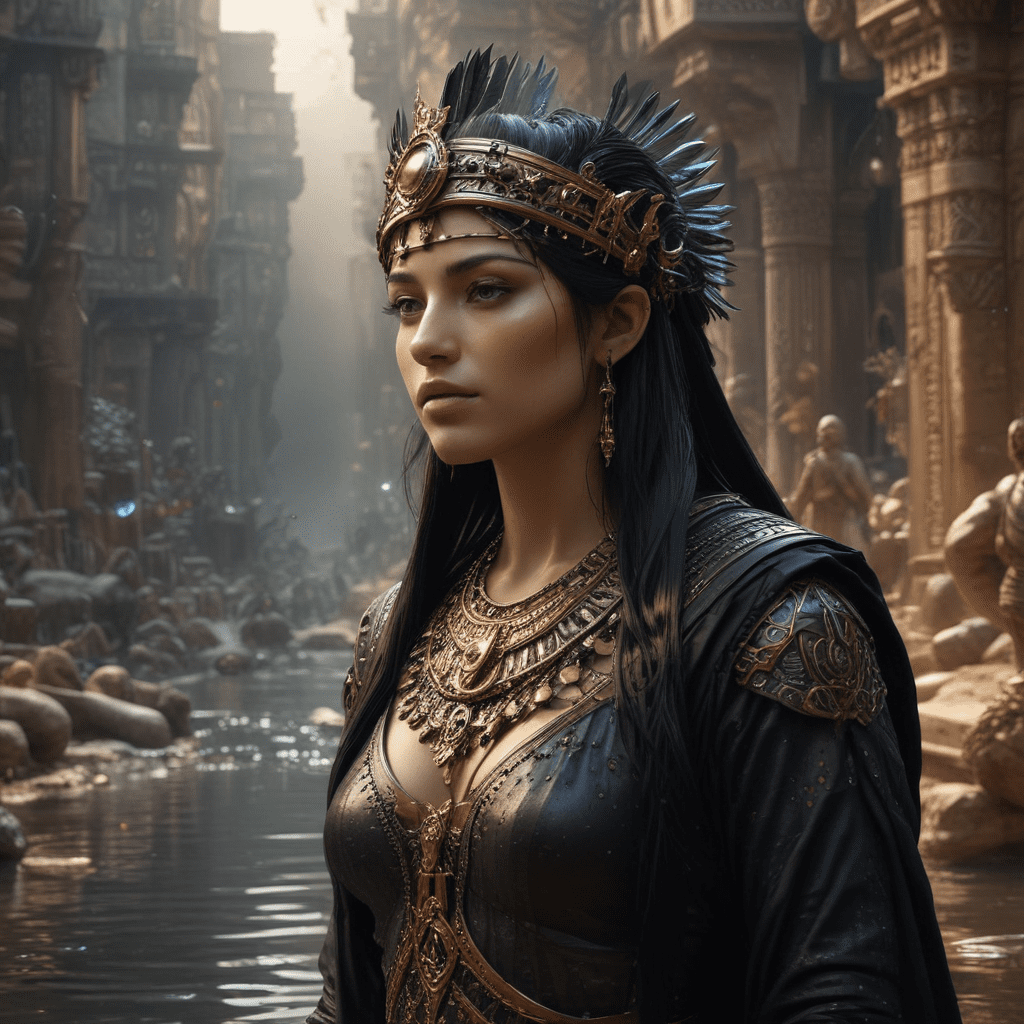I. Introduction:
Mesopotamian Mythology: A Journey through Ancient Beliefs
Mesopotamian mythology, the vibrant tapestry of myths and legends woven by the ancient civilizations between the Tigris and Euphrates rivers, offers a captivating glimpse into the beliefs and values of a long-lost world. Its stories, echoing with the echoes of creation and the struggles of gods and mortals, provide invaluable insights into the Mesopotamian worldview, shaping their art, literature, and rituals. Among its many narratives, the myth of the Black-headed People stands out as a foundational tale, explaining the origin and purpose of humanity within the grand scheme of the cosmos.
The Enûma Eliš: Unveiling the Mesopotamian Creation Myth
The Enûma Eliš, a magnificent Babylonian epic poem, serves as the cornerstone of Mesopotamian creation mythology. This multifaceted narrative, etched onto clay tablets in cuneiform script, unfolds the dramatic tale of the emergence of the cosmos from primordial chaos. It details the rise of the younger gods, led by the mighty Marduk, and their triumph over the forces of disorder embodied by the monstrous Tiamat. Within this epic tapestry, the myth of the Black-headed People emerges as a crucial chapter, revealing the divine origin and purpose of humankind.
The Myth of the Apsu and Tiamat: A Clash of Titans
The Enûma Eliš begins with the primordial deities, Apsu, the freshwater god, and Tiamat, the goddess of the saltwater sea, representing the primal undifferentiated state of the universe. Their union gives rise to a pantheon of younger gods, who disrupt the primordial tranquility with their boisterous presence. Apsu, enraged by the disruption, plots to destroy the younger gods, prompting a cosmic conflict. In the ensuing struggle, Marduk, the cunning and ambitious leader of the younger gods, emerges as the champion, slaying Tiamat and establishing order in the cosmos.
The Birth and Rebellion of the Black-headed People: From Divine Blood to Mortal Strife
Following Tiamat's defeat, Marduk, the triumphant hero, fashions the heavens and the earth from her vanquished body. In a pivotal act of creation, he then shapes humankind from the blood of Kingu, Tiamat's monstrous lieutenant. These "Black-headed People," as they are called, are destined to inhabit the newly created world. However, their existence is not without its challenges. The gods, still wary of the potential for chaos, impose strict rules and regulations upon humanity, demanding obedience and service. Despite these constraints, the Black-headed People strive to fulfill their divinely ordained purpose, shaping the world according to the will of the gods.
## VI. The Creation of Humans and Their Purpose:
The Black-headed People, according to the myth, were created to serve the gods and maintain order in the world. They were tasked with tending to the temples, offering sacrifices, and upholding the laws established by the divine. Their existence was seen as a necessary component of the cosmic balance, ensuring the continued prosperity and stability of the universe.
The myth emphasizes the responsibility of humans to live in harmony with the divine will. Their actions, both individual and collective, had a direct impact on the well-being of the cosmos. The gods were believed to be watchful and would reward obedience and piety while punishing transgressions and impiety.
## VII. The Mythological Significance of the Black-headed People:
The Black-headed People, in Mesopotamian mythology, held a profound symbolic meaning. They represented the link between the divine and the mortal realms, embodying the concept of divine creation and the hierarchical structure of society. Their existence served as a constant reminder of humanity's place within the cosmos and their obligations to the gods.
The myth also explored the complex relationship between humans and the divine. While humans were created by the gods and subject to their authority, they also possessed a degree of free will and the ability to influence their own destiny. This tension between divine control and human agency became a recurring theme in Mesopotamian literature and thought.
## VIII. The Influence of the Myth on Mesopotamian Culture:
The Black-headed People myth exerted a profound influence on Mesopotamian culture, shaping its art, literature, and rituals. Artistic representations of the creation story, including the slaying of Tiamat and the fashioning of humans from Kingu's blood, adorned temples and palaces. Literary works, such as the Epic of Gilgamesh, drew inspiration from the myth, exploring themes of human mortality, the search for immortality, and the relationship between gods and humans.
Ritual practices also reflected the central role of the Black-headed People in the Mesopotamian worldview. Sacrifices, prayers, and festivals were performed to appease the gods and ensure their continued favor. These rituals reinforced the social hierarchy and emphasized the importance of maintaining order within the cosmos.
## IX. Conclusion:
The myth of the Black-headed People remains a captivating and insightful window into the beliefs and values of ancient Mesopotamia. It offers a rich understanding of the Mesopotamian worldview, their creation story, and their complex relationship with the divine. Through its enduring influence on Mesopotamian culture, the myth continues to shape our understanding of human origins, purpose, and place within the cosmos.
## X. Frequently Asked Questions (FAQs):
1. Who were the Black-headed People?
The Black-headed People were the humans created by the god Marduk from the blood of Kingu, Tiamat's monstrous lieutenant, in Mesopotamian mythology. They were tasked with serving the gods and maintaining order in the world.
2. What is the significance of the Black-headed People myth?
The myth of the Black-headed People holds profound symbolic meaning, representing the link between the divine and mortal realms, embodying the concept of divine creation, and highlighting the hierarchical structure of society. It also explores the complex relationship between humans and the divine, emphasizing human responsibility and the consequences of actions.
3. How did the myth influence Mesopotamian culture?
The Black-headed People myth significantly influenced Mesopotamian art, literature, and rituals. Artistic representations of the creation story, literary works like the Epic of Gilgamesh, and ritual practices all reflected the myth's central themes and reinforced the Mesopotamian worldview.



